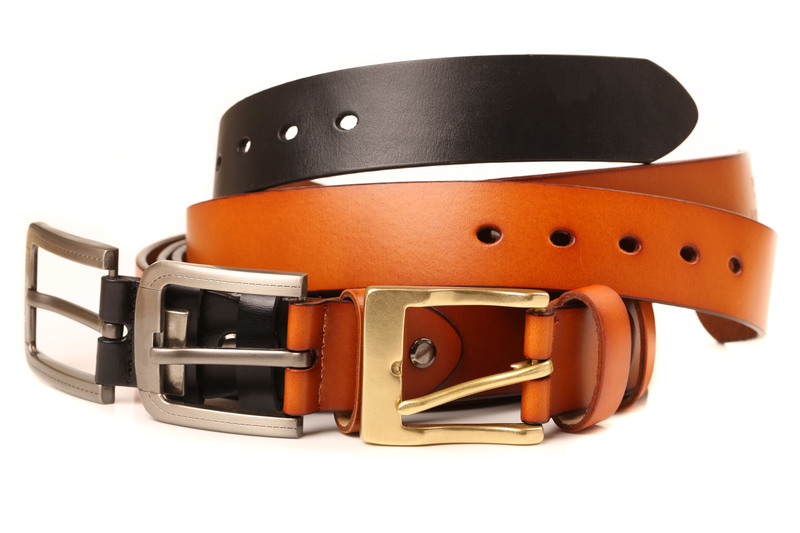Expert-Approved Tips for Effective Sofa Storage
Posted on 17/05/2025
Expert-Approved Tips for Effective Sofa Storage
Storing your sofa properly, whether short-term or for an extended period, is crucial to preserve its quality, appearance, and functionality. Sofas are significant investments in any home, so understanding the best practices for effective sofa storage ensures they last for years to come. This comprehensive guide brings you expert-approved tips for sofa storage, discussing practical steps, important considerations, and frequently overlooked details. Our advice will help you protect your sofa from damage, save space, and optimize your storage solutions.
Why Proper Sofa Storage Matters
Effective sofa storage goes beyond just placing your couch in any available space. Sofas--whether sectional, sleeper, or classic designs--are vulnerable to a range of threats when stored incorrectly:
- Moisture and humidity can lead to mold and mildew growth.
- Direct sunlight causes upholstery fading or fabric deterioration.
- Pests such as rodents and insects can cause physical damage or create nests.
- Poor stacking and placement may cause distortion or frame bending.
- Lack of preparation can result in stubborn stains and lingering odors.
Expert-backed storage methods help you avoid costly repairs or replacements, ensuring your sofa remains comfortable, beautiful, and ready for future enjoyment.

Preparing Your Sofa for Storage
1. Clean Thoroughly Before Storing
The first and most vital step in sofa storage solutions is a meticulous cleaning routine. Experts recommend:
- Vacuuming all surface areas, crevices, and under the cushions to remove dirt, dust, pet hair, and crumbs.
- For fabric sofas, use a fabric-safe upholstery cleaner. Spot clean stains and let the sofa fully air dry before packing.
- On leather sofas, use a gentle cleaner or a damp cloth. Apply a leather conditioner to maintain suppleness and prevent drying out.
- Remove all detachable parts--cushions, legs, or modular sections--and clean each piece individually.
2. Disassemble When Possible
Disassembling the sofa makes it easier to move and optimizes your sofa storage space.
- Remove legs, arms, and loose cushions.
- Carefully label hardware and keep all small parts in a zipped bag attached to a main sofa frame.
- Consult your manufacturer's guide for specific disassembly instructions to avoid damage.
Tip: Take photos of the process to make reassembly simple and stress-free.
Choosing the Right Sofa Storage Location
Indoor vs. Outdoor Sofa Storage
Where you store your sofa dramatically impacts its condition. The best practice is to store your sofa indoors, preferably in a secure, climate-controlled environment.
- Indoor self-storage units offer protection from the elements, pests, and humidity changes.
- If you must use a garage or shed, invest in weatherproof covers and consider a dehumidifier to minimize moisture damage.
Outdoor storage is not recommended for sofas unless you have weatherproof, airtight containers, as rain, snow, and extreme temperatures quickly ruin upholstery and frames.
Consider a Climate-Controlled Storage Unit
Experts universally recommend climate-controlled storage for upholstered furniture. Fluctuations in temperature and humidity are the primary causes of warping, cracking, and mildew buildup.
- Climate control keeps the environment consistent, usually between 55?F and 85?F, and maintains humidity below 55%.
- Minimizes risks from mold, pests, or excessive drying out of natural materials like wood and leather.
Pro Tip: Always inspect the storage facility for cleanliness, security, and humidity management before signing a contract.
Best Practices for Packing and Protection
Wrap and Cover Your Sofa Correctly
- For fabric sofas, use breathable covers or moving blankets. Never use plastic directly, as this traps moisture and encourages mold.
- For leather sofas, opt for soft cotton sheets to protect from dust and scratches while allowing airflow.
- Never wrap furniture too tightly--leave enough room for air circulation to prevent condensation.
Tip: Shrink-wrap and bubble wrap can help protect delicate legs and corners. Place cardboard between stacked parts to avoid rubbing or scratches.
Elevate Off the Ground
- Wooden pallets, foam blocks, or plastic risers can lift your sofa above the floor, protecting it from accidental leaks or minor flooding.
- Kept elevated, sofas are better protected from dust, insects, and mildew.
Fact: Concrete floors attract and retain moisture--keeping your sofa raised is a simple yet often overlooked safeguard.
Allow Space for Air Circulation
- Avoid stacking boxes or heavy items on top of your sofa; this may compress cushions or warp the frame.
- Position your sofa a few inches away from walls and other stored items to promote airflow and prevent heat or moisture buildup.
Keep It Upright
Sofas should ideally be stored upright, as designed. Placing your sofa on its side or back can distort the frame and permanently damage the springs or cushions.
Expert Advice: If your storage dimensions are tight, store each sofa component (like seat, backrests, modular units) separately to avoid stacking unnecessarily.
Key Maintenance Tips During Storage
Regularly Inspect Your Sofa
Even in the best conditions, periodic checks are necessary for effective long-term sofa storage:
- Check for signs of moisture, insect activity, or musty odors.
- Re-tighten any hardware if necessary and make sure covers stay securely in place.
- Air out the storage space on mild days to reduce stale smells and condensation.
Control the Environment
- Use desiccant packs inside storage covers to absorb excess humidity.
- Avoid storing items like paint, chemicals, or food near your sofa, as fumes, spills, or crumbs can attract pests or cause staining.
- For extra protection, use natural pest repellents--lavender sachets or cedar blocks are both effective and safe for furniture.
Don't Forget Insurance
Consider insurance for stored furniture, especially valuable or antique sofas. Many storage facilities offer affordable protection against theft, fire, or natural disasters.
Expert Tips for Saving Space While Storing Sofas
Measure and Plan
- Measure your storage unit and the sofa components before moving. Plan the arrangement on paper or with apps designed for room layout.
- Place sofas and large items at the back and stack lighter, non-crushable boxes on seats to maximize use of vertical space.
Use Modular Storage Solutions
- For sectional sofas, store each segment separately and wrap them individually.
- Stack cushions upright rather than flat to maintain shape and reduce the risk of mildew.
Common Mistakes to Avoid in Sofa Storage
- Skipping the cleaning step: This can lead to permanent stains, odors, or even pest infestations.
- Using plastic covers directly: Traps moisture, increasing the risk of mold.
- Storing in a non-climate-controlled space for prolonged periods: Shortens your sofa's lifespan.
- Placing heavy items atop cushions: Can flatten or break the internal structure.
Unpacking and Reintroducing Your Sofa
Clean and Air Out
When the time comes to retrieve your sofa, remove all covers and let it air out completely. Clean with appropriate products for the surface before reassembling and arranging in your desired space.
Check for Any Needed Repairs
- Test the frame, springs, and all moving parts for stability.
- Treat any minor issues or stains before they become permanent.
- Reattach all hardware and components following the assembly photos you captured earlier.

FAQs About Effective Sofa Storage
- How long can a sofa be stored safely? With proper climate-controlled storage, your sofa can safely be kept for years without significant risk of damage.
- Can I store a sofa in a basement? Only if it's finished, dry, and climate-controlled. Otherwise, basements often trap moisture and encourage mold.
- Should I use mothballs or strong pest repellents? Avoid harsh chemicals--opt for cedar blocks or natural deterrents to prevent upholstery damage.
- Is it safe to store a leather sofa long-term? Yes, especially in a climate-controlled setting. Regular conditioning and breathable covers are essential.
Conclusion: Preserve Your Sofa with These Expert-Approved Storage Tips
Taking the time to store your sofa correctly pays off in the long run. By following these expert-approved tips for effective sofa storage, you safeguard your furniture against common risks, maintain its appearance, and ensure it remains a cozy and attractive centerpiece for years to come.
Whether you're remodeling, moving to a new home, or simply need to make space temporarily, remember the importance of proper cleaning, environment control, and careful packing. Effective sofa storage is about thoughtful preparation, protection, and monitoring--your sofa (and your future self) will thank you!



